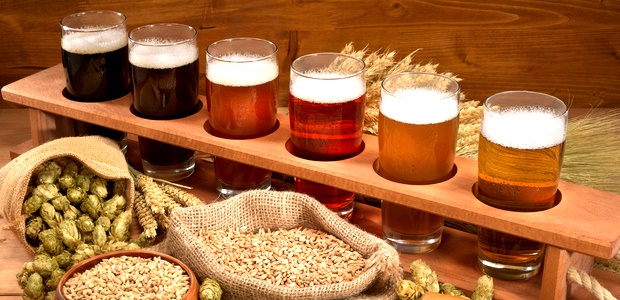(images: iStock)
Beer! It’s delicious, nutritious and it only takes four ingredients to brew. Only four you say? Yup, only four but it’s the variation on each ingredient that makes beer so diverse. Where is it from? How was it grown? How was it processed? You get the idea. Let’s take a look at each ingredient and get to know them a little better.
Barley
Barley begins its life as a hard cereal grain swaying gently in the breeze. Before it can be brewed with, it needs to be malted. Malting produces carbohydrates and sugars which give the yeast something to eat. In short, the malting process involves soaking the grain in water to sprout it and then heating it to stop it in its tracks. If the grain was allowed to keep growing, it would use up the good stuff that brewers need. By heating it, we hit the pause button. From there the grain is dried or kilned. The drying process toasts the malted barley and it can range from light to dark. This toasting process is where beer gets a lot of its aroma and flavour. The malted barley is now ready for brewing. During the brewing process, the malted barley is soaked in hot water to release its sugars, flavour and colour.
Water
The source of all life is also the source of all beer. In fact, beer is mostly water so it makes sense to use the best water, but what is the best water? When one thinks of pure water, images of melting snow and mountain streams spring to mind. It could be good for brewing some styles of beer but not all. Back in the day, brewing was a trial and error process. Over time certain regions became famous for particular styles. It’s no coincidence that Dublin is famous for Guinness. The water there is great for making stout. Nowadays brewers can get water reports which give them a breakdown of the minerals and pH levels. They can then adjust the water to suit the style they want to brew. Adjusting the water is not about making the water taste better. It’s about making the other ingredients perform better and enhancing their flavours.
Hops
Hops are the lead guitar and frontman all rolled into one. They are the rockstar that ushered in the craft beer revolution and damn they are tasty in beer. I say ‘in beer’ because if you’ve ever eaten a raw hop, then you’ll know that they are not tasty at all. They are pure bitterness but in beer they are pure magic. They start life as little flowers which are packed full of yellow resinous powder called lupulin. It’s this powder that gives beer aroma, flavour and bitterness. There are a huge variety of hops all over the world and every region produces different characteristics. Hops are added at different stages of the brewing process to extract bitterness, aroma and flavour. They are the perfect counterpoint to the sweetness of malted barley.
Yeast
Yeast is arguably the most important ingredient in beer because, without it, we wouldn’t have fermentation. At the end of the brewing process, yeast is pitched into the sugary liquid or wort and left to do its thing. As it eats the sugars and ferments, it produces two of my favourite things – booze and bubbles. There are many different strains of yeast but they all fall under two categories: lager yeast or ale yeast. Lagers ferment at cooler temperatures and ales ferment at warmer temperatures. Yeast has been used for thousands of years but the crazy thing is, we only figured out the process in the 1800s. Its primary job is to ferment the beer but the fermentation also produces a range of fruity flavours.
Want more about beer? Check out Karl’s latest craft beer trends for 2018.
Karl Tessendorf is one part of the duo that hosts ‘Beer Country‘, South Africa’s first TV show dedicated to beer, braai and the open road.

